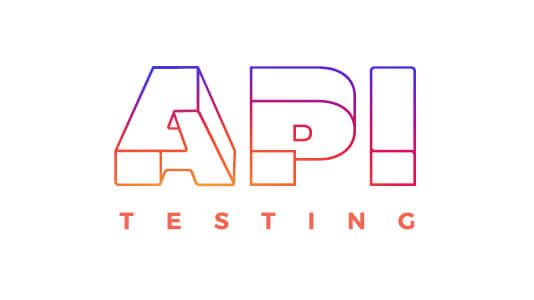API TESTING INTERVIEW QUESTIONS

API (Application Programming Interface) facilitates data exchange and communication between two software systems. APIs serve as a connection point between two applications, allowing them to communicate with one another. A programming interface (API) is a set of functions that can be called by another programme.
The API receives a request from the source, sends it to the database, retrieves the requested data from the database, and sends a response back to the source. The API takes the user’s requests and responds without revealing the internal details. Abstraction is provided by API.
API testing is a type of software testing in which APIs are directly tested. Integration testing includes API testing to see if the API meets expectations in terms of functionality, reliability, performance, and security. API testing can be done by a variety of API systems. Our primary focus in API testing is the software architecture’s Business Logic Layer.
The following types of API testing are included in API testing:
1st Unit Test
2 Functional Evaluation
3 Load Checking
4 Error/Runtime Detection
5 Security Checks
6 User Interface Testing
7 Testing for interoperability and WS compliance
Testing for Penetration
9 Fuzz Checking
1 HTTP
2 REST
3 SOAP
4 JMS
5 UDDI
API testing tools include:
1 Parasoft SOAtest
2 PostMan
3 AlertSite API monitoring
The API test environment is a fairly complex method in which the server and database are configured to meet the needs of the software application. API testing does not include the use of graphical user interfaces (GUI).
After installation, API is tested to ensure that it is operational.
The API framework is described by the config. file, which contains a list of all APIs that must be activated and are activated for any given programme run. This is critical because not all APIs are required for every test run.
Many APIs have limits set by the provider. As a result, try to estimate our usage and comprehend how it will affect the overall cost of the offering.
The following are the benefits of API testing:
1 Test for core functionality: API testing allows you to access the application without having to use the user interface. The application’s core functionality will be tested before the GUI tests. This will aid in detecting minor issues that may become more serious during GUI testing
2 Time efficient: API testing takes less time than GUI testing. API testing, in particular, requires less code, allowing it to provide better and faster test coverage than GUI test automation. This will lower the overall cost of the testing project
3 Language Independence: Data is exchanged in API testing using XML or JSON. These transfer modes are completely language-independent, allowing the user
1. Exhaustive Testing: It is not possible to conduct exhaustive testing. Instead, we need an optimal amount of testing based on the application’s risk assessment.
2. Defect Clustering: According to Defect Clustering, a small number of modules contain the majority of the defects detected. Approximately 80% of the defects were discovered in 20% of the modules. We can identify such risky modules through experience. However, this approach has its own set of issues. If the same tests are repeated indefinitely, the same test case will eventually stop finding new bugs.
3. Pesticide Paradox: Testers cannot rely on current techniques. They must constantly strive to improve the existing method in order to make testing more effective.
A framework, also known as a software framework, is a platform for creating software applications. API frameworks serve as a foundation for software developers to build applications for a specific platform.
A framework, for example, can contain predefined classes and functions that can be used to process input, manage hardware devices, and interact with system software.
Frameworks are similar to Application Programming Interfaces (APIs), and technically, frameworks include APIs. The framework provides the foundation for programming, while the API provides access.
The following are some of the most common API tests:
1. The API response should be validated based on the request. We will ensure that the return value is appropriate for the request.
2. When an API updates a data structure, we must ensure that the system authenticates the result.
3. We will check to see if the API is triggering another event or requesting another API.
4. We will test the API’s behaviour when no value is returned.
We send a request to the API with known data and then analyse the response in API testing.
1. We will check the data for accuracy.
2. The HTTP status code will be displayed.
3. We’ll look at the response time.
4. Error codes in the event that the API returns any errors.
5. Authorization would be verified.
Non-functional testing, such as performance and security testing.
REST API is a set of functions that assists developers in performing requests and receiving responses. The REST API interacts with the user via the HTTP protocol.
REST stands for Representational state transfer. It is a useful API creation standard.
testing.
REST API is a set of functions that assist developers in processing requests. The testing of the graphical user interface is referred to as UI (User Interface). The look and feel of the application is the focus of UI testing. The main focus of user interface testing is on how users interact with app elements such as images, fonts, layout, and so on.
API testing allows two software systems to communicate with one another. API testing is performed on the backend, also known as backend testing.
